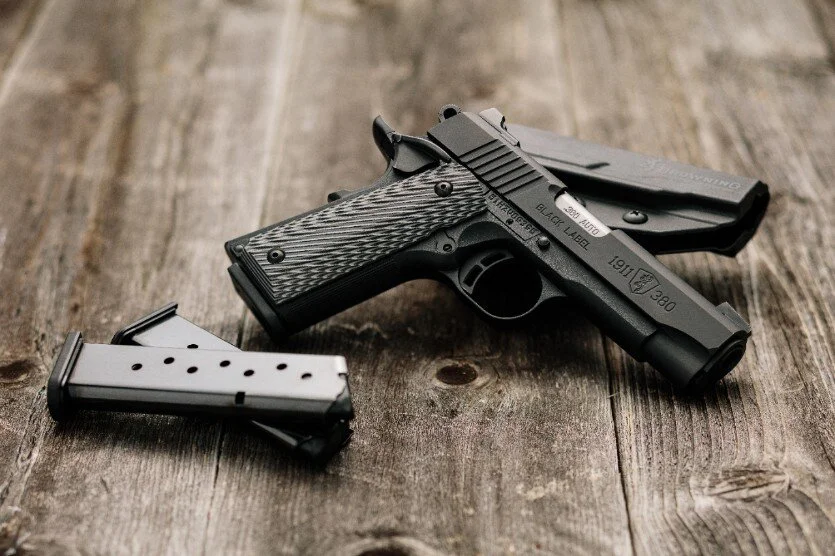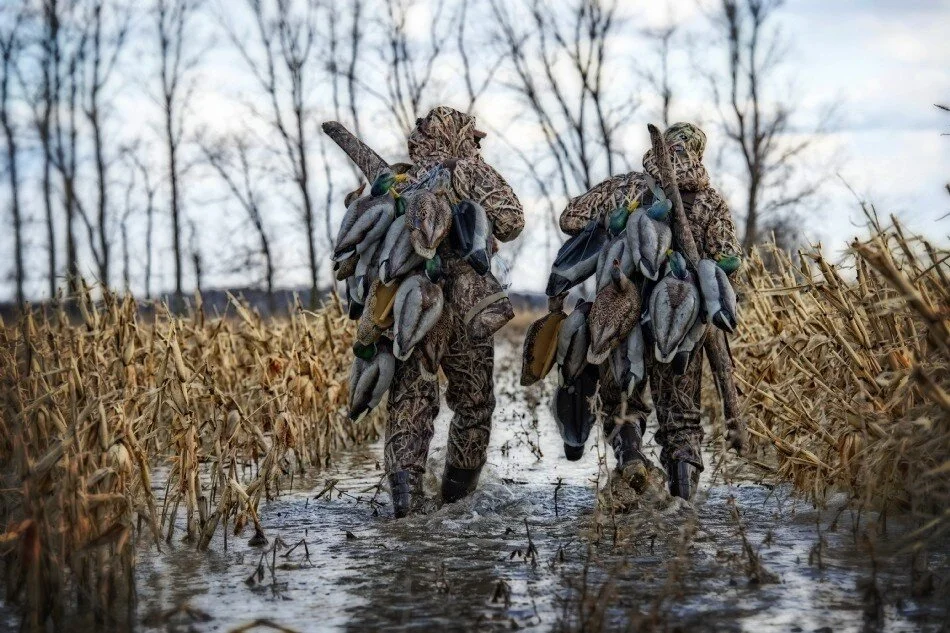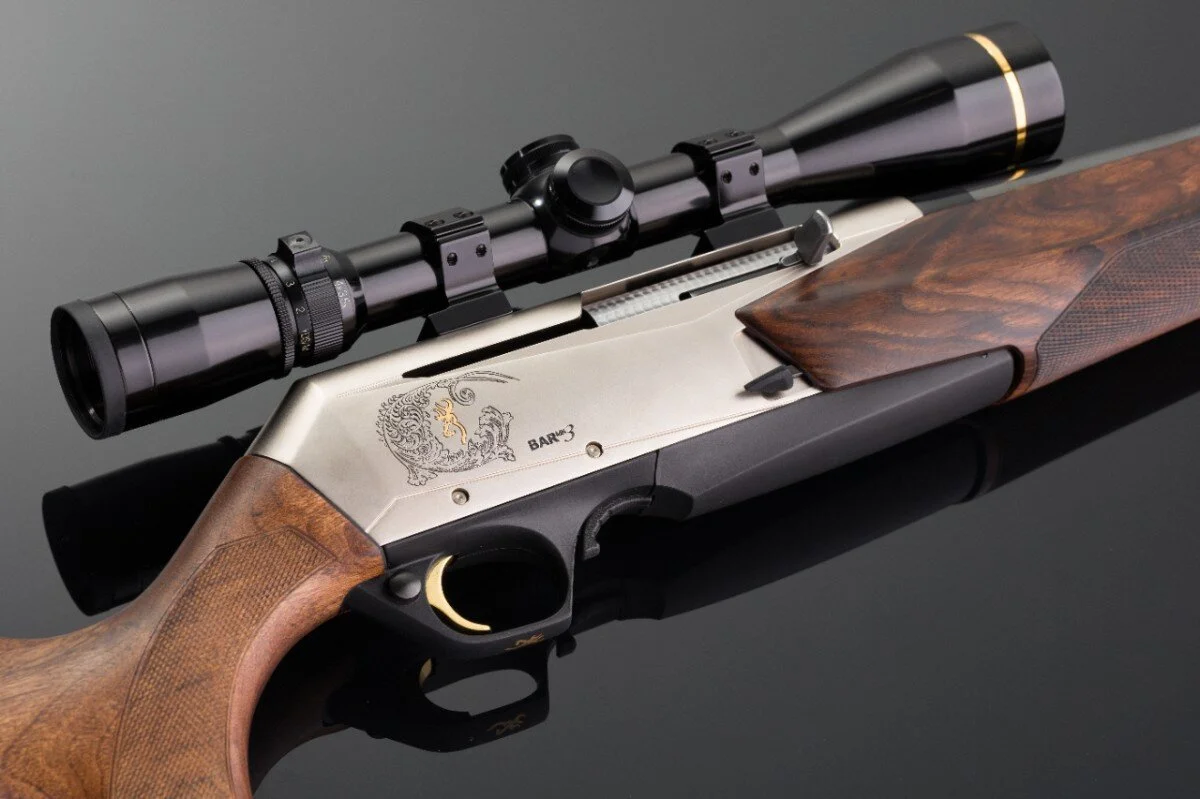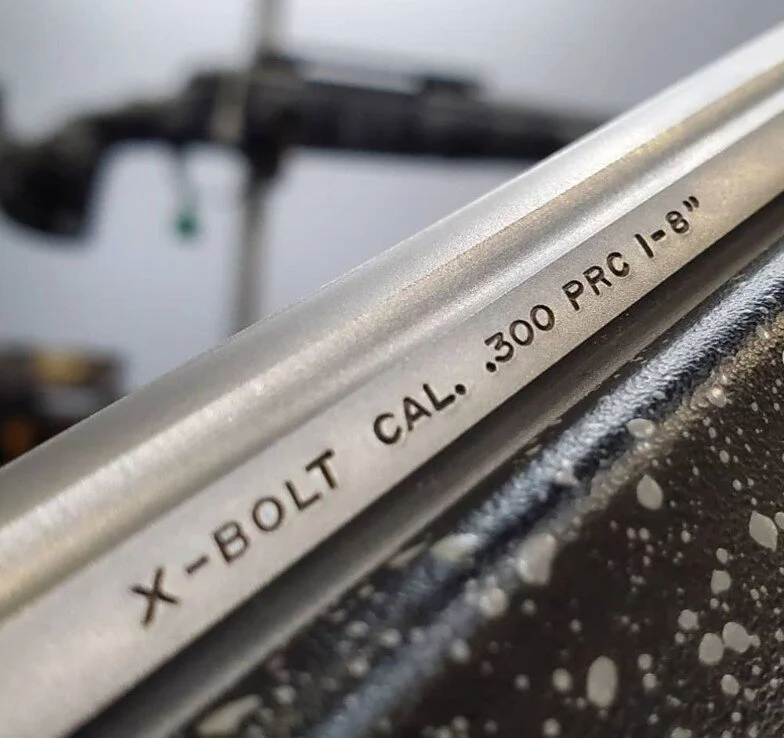5 Tips for First-time Pistol Buyers
browning 1911
one of the most legendary pistols in history
Based on an article originally written for and posted by www.browning.com. Paraphrased and reposted with permission.
While most hunters who use a firearm to harvest their game tend to use a rifle or shotgun (with a few exceptions), there is still a place for a handgun out in the field. Many opt to carry a handgun when going after dangerous game such as bears, lions, and even hogs where quick access to a heavy caliber is always a necessity. For those interested in owning a handgun for one reason or another, Browning put together this quick guide for first time pistol buyers to help you navigate the different calibers, models, and other variables to consider when buying a handgun.
Courtesy of Browning | 2020
In praise of Smaller Calibers
As with any of these guides, training is the most important thing for first-time firearm owners. Without it, you become a danger to those around you. With that in mind, let’s think about what calibers would be best to start off with.
Courtesy of Browning | 2020
You definitely don’t want to start off with something like a .44 Magnum or a .357 Mag. The massive recoil on these pistols will (quite literally) hammer bad habits into your shooting process as you anticipate that big kick. Instead, try a .22LR like Browning recommends in their guide for first-time shooters:
“The .22 Long Rifle cartridge can be ideal for your first handgun and rimfire ammunition is inexpensive . The recoil and noise of a rimfire are less intimidating for new shooters. You can easily carry a box of 100 rimfire cartridges in your pocket that doesn’t take up more space than a candy bar. Rimfire ammunition comes in many different styles, ranging from high-velocity hollow points, standard velocity target cartridges, and lower velocity subsonic ammo.”
- Browning’s Guide for First Time Pistol Buyers
2. consider getting a single-action handgun
Going back to the idea of training, it’s imperative that you make the process of shooting as easy as possible so you can focus on your fundamentals. You must master these before you can go any further. One of the ways you can do this is by making the trigger pull easier. Not anything crazy (don’t go putting a half-ounce trigger on your first pistol), but enough that you don’t have to work so hard to pull it that you can’t focus on anything else.
“Many modern semi-automatic handguns have a double-action trigger, meaning the trigger both cocks and releases the hammer or striker. Because the trigger performs both functions it has a long, heavy pull for the first shot with subsequent shots having a shorter, lighter pull. Other designs, called double-action only (DAO), are similar to a revolver and have the same long, heavy trigger pull for each shot.” - Browning’s Guide for First Time Pistol Buyers
Courtesy of Browning | 2020
To make that trigger pull a bit easier, Browning recommends in their guide that you go with “a semi-automatic handgun with a single-action trigger”.
“A semi-automatic handgun with a single-action trigger (generally speaking) requires the hammer to be cocked before it can be fired for the first time. Once the first shot is made, the hammer is re-cocked by the action and the handgun is ready to fire again. Many shooters, novices especially, find a handgun with a single-action trigger preferable with the consistency and lighter pull allowing them to place more focus on proper grip and sight alignment.” - Browning’s Guide for First Time Pistol Buyers
3. What is a “semi-auto” pistol?
Semi-automatic, or “semi-auto”, is a term that’s thrown around a lot in the gun control debate, most often by politicians who have no idea what it means (but it sounds really scary! It says “automatic”!). The most basic definition is a firearm that fires 1 shot for every pull of the trigger without the shooter needing to cock the hammer between each shot. These are also sometimes referred to as “auto-loaders” and require a magazine with cartridges loaded into it to be inserted into the pistol grip, as explained by Browning’s guide below:
“You load the cartridges into the magazine, then insert the loaded magazine into the grip of the pistol. You then pull the slide fully to the rear and release it to chamber a cartridge, and then place the manual "safety" in the on safe position. When the manual “safety” is placed in the off position the pistol will fire when the trigger is pressed.
Courtesy of Browning | 2020
“The pistol will also eject the fired cartridge case and load a fresh cartridge from the magazine, so it is ready to fire again with another press of the trigger. When you’re finished firing just remove the magazine from the gun, pull the slide fully to the rear to eject any cartridge remaining in the chamber. Always double check to make sure the chamber is empty and the magazine is removed whenever storing or transporting your gun.” - Browning’s Guide for First Time Pistol Buyers
Courtesy of Browning | 2020
4. durability and reliability are key
Pretty much any weapons trainer will tell you not to spend a ton of money on your first gun. Buy a rugged, reliable handgun for a decent price and spend the big bucks on getting quality training from a professional.
Courtesy of Browning | 2020
According to Browning’s guide, the qualities you’re looking for in a durable pistol are “top-quality materials like stainless steel, aircraft-grade aluminum alloys and the latest polymer composites that can shrug off hard use and harsh conditions.”
“Like a fire extinguisher or seat belt, a pistol must be ready, reliable and dependable whenever and wherever you might need it.”
5. Understand the Law and Get Additional Training and Firearm Safety Information from a Reliable Source
Owning a firearm is a wonderful privilege, but it also comes with a great deal of personal responsibility and commitment to safety procedures. Many people are afraid to buy a gun because of the dangers associated with it. But a gun is a tool. And, just as you would with any other tool that could harm someone if mishandled, you must learn how to use it properly from an expert. Remember the 4 Universal Rules of Gun Safety:
Treat every gun as if it were loaded.
Never point the gun at something you do not intend to destroy.
Never touch the trigger until you are looking down the sights at your intended target.
Be Sure of Your Target and what is behind it.
Browning lays out some other ways you can do this below:
“Make sure you comply with the firearm laws and regulations for your location and that you read and understand your owner’s manual before you store, load or use your new firearm. Take some time to do additional research on the skills you need to develop to be a safe and effective firearm owner.
Your local gun store, gun range or shooting club may offer basic and advanced classes in firearm safety, marksmanship and home protection from certified instructors. There are many good online resources available as well.
One excellent resource for both local gun laws and training is the National Rifle Association. You can learn more at https://onlinetraining.nra.org”
“Treat every gun as if it were loaded.”
Gun Safety Starts with You. Here are some more good rules to live by when handling firearms (From Browning):
Always keep the muzzle pointed in a safe direction.
Firearms should be unloaded when not actually in use.
Don't rely on your gun's "safety."
Be sure of your target and what's beyond it.
Use correct ammunition.
If your gun fails to fire when the trigger is pulled, handle with care!
Always wear eye and ear protection when shooting.
Be sure the barrel is clear of obstructions before shooting.
Don't alter or modify your gun, and have guns serviced regularly.
Learn the mechanical and handling characteristics of the firearm you are using.
One final rule of thumb when it comes to firearms: TREAT EVERY GUN AS IF IT WERE LOADED. All other safety rules flow from this one.
Learn more about firearm safety at https://www.nssf.org/safety/













